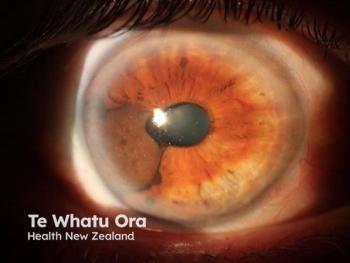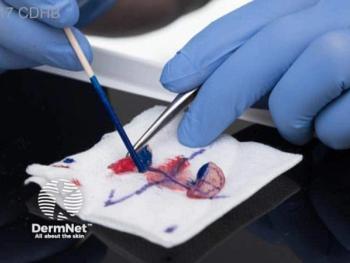
- Dermatology Times, February 2020 (Vol. 41, No. 2)
- Volume 41
- Issue 2
Nano-pulse stimulation promising for skin lesions
Nano-Pulse Stimulation has shown efficacy in clearing benign cutaneous lesions, and may also have the potential to treat malignancies, says this expert.
Nano-Pulse Stimulation (NPS, Pulse Biosciences) is an exciting new technology that has demonstrated efficacy for clearing various benign cutaneous lesions and holds great interest for its potential application to treat malignancies, according to Thomas E. Rohrer, M.D.
“I became interested in NPS because it is completely different from any of the other energy modalities we use in dermatologic surgery,” says Dr. Rohrer, who is in private practice, SkinCare Physicians, Chestnut Hill, Mass.
“NPS acts via a unique cell-specific, non-thermal mechanism to induce regulated cell death without causing damage to the non-cellular dermis. NPS also appears to stimulate an adaptive immune response, suggesting that, when used to treat malignancies, it could potentially clear or prevent metastatic sites in addition to eliminating the primary tumor.”
NPS is performed under local anesthesia using a treatment tip containing a microarray of needles that deliver high amplitude, ultrashort (nanosecond range) electrical pulses to the target lesion.
Application of the electrical energy leads to the immediate appearance of nanometer size holes in the cell membrane, mitochondrial membrane and endoplasmic reticulum with subsequent changes in calcium flux and a cascade of events resulting in regulated cell death.
“Whereas necrotic cell death caused by techniques that utilize thermal destruction activates an inflammatory response, NPS-induced regulated cell death stimulates an immune response,” says Dr. Rohrer.
Histological evaluation of sites treated by NPS has identified the appearance of activated caspase-3, a sign of apoptotic cell death, and demonstrated the presence of selective damage to cellular structures in the epidermal and dermal layers without effects on the integrity of dermal tissue.
“The specificity of NPS suggests it could be used to treat cellular targets in the epidermis and dermis with good cosmetic results. The studies to date have shown excellent results using NPS to treat seborrheic keratosis (including macular lesions), warts and sebaceous hyperplasia,” says Dr. Rohrer. “Early feasibility studies are in development or underway to investigate this modality in the treatment of cherry angiomas, common nevi, syringoma, acne, tattoos and nodular basal cell carcinomas.”
BENIGN LESION APPLICATIONS
Results have been published from a study investigating NPS for treatment of sebaceous hyperplasia [Munavalli GS, et al. . Oct 4. Epub ahead of print]. The paper reported outcomes for 222 treated lesions, of which 90% were rated as clear and 9.5% were judged mostly clear at 60 days post-treatment. Mild hyperpigmentation and slight volume loss were each noted at approximately one-third of the treated sites. Therefore, a dose-response study was launched to evaluate whether use of a lower energy level could maintain efficacy but avoid the pigmentary and volume changes.
“Interim results from the ongoing dose-response study show that the lowest energy level tested resulted in a 95% clearance rate with improved cosmesis,” he says.
A recently published study investigating NPS for treatment of raised, off-facial seborrheic keratosis reported 82% clearance efficacy. Emerging data from an ongoing study of macular SK lesions suggest comparable efficacy clearance.
The ability of NPS to target sebaceous glands prompted interest in investigating it as a treatment for acne. A feasibility study is now underway investigating that application in
Positive results were also achieved in a feasibility study investigating NPS for treating cutaneous non-genital warts, and a larger multicenter study is underway to further explore this application.
“In the wart study, untreated control warts also cleared after NPS, supporting the idea that the procedure stimulates an immune response,” Dr. Rohrer says.
MALIGNANT TARGETS
A pilot study was conducted to investigate NPS for treatment of nodular basal cell carcinomas. Seven patients with nodular BCCs located on the chest, forearm, back or shoulder received a single session of NPS. All post-treatment (3-7 weeks) biopsies of the NPS treatment zone were devoid of nodular BCCs. There was no clinical or histologic evidence of dermal scaring. An ongoing study is further investigating NPS for BCC, and there is also interest in its use for treating nevi and melanoma, says Dr. Rohrer.
“Preclinical studies performed in animal models of melanoma showed that NPS treatment eliminated the primary tumor and stimulated a lasting immune response with reduction in metastases and increased animal survival,” he says.
“The potential for NPS to treat melanoma and stimulate an immune response that can target metastases holds major interest for me as a dermatologic surgeon specializing in skin cancer and aesthetic dermatology.”
Disclosures:
Dr. Rohrer is an investigator and member of the scientific advisory board for Pulse Biosciences.
Articles in this issue
almost 6 years ago
Gene expression profile testing aids skin cancer managementalmost 6 years ago
How to diagnose rosacea in skin of color patientsalmost 6 years ago
Rosacea commonly underdiagnosedalmost 6 years ago
Technology targets non-genital wartsalmost 6 years ago
Can sweat shed a light on disease severity in atopic dermatitis?almost 6 years ago
Adjunctive platelet-rich plasma may improve acne scarsalmost 6 years ago
An investigational drug for keloidsalmost 6 years ago
Study supports evidence on indoor tanning riskalmost 6 years ago
Mind-body therapies effective for skin disordersalmost 6 years ago
Dermatologist closes gaps for patients with skin of colorNewsletter
Like what you’re reading? Subscribe to Dermatology Times for weekly updates on therapies, innovations, and real-world practice tips.

















